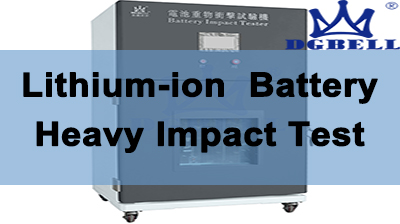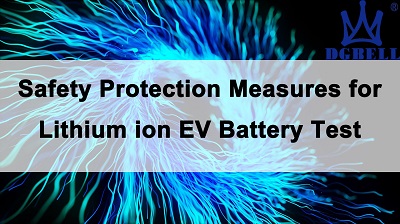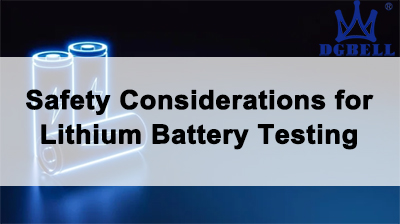Bài viết mới
Thử nghiệm nhiệt độ pin Lithium ion
Về An toàn của Pin Lithium EV — Sự thoát nhiệt
Categories
- Company News 13
- Exhibitions 10
- News 1
- Test Chambers Knowledge 234
Nội dung chính

Does the power recovery increase the number of battery cycles?
The motor that powers new energy vehicles is almost exactly the same as a generator in terms of component structure and line connection. If you change the direction of rotation of the rotor, the motor can be transformed into a generator.
In order to reduce energy waste, engineers added a converter to the power system of the new energy vehicle. When the vehicle is coasting or braking, the converter will start on its own. The motor changes the direction of rotation and transforms it into a generator, which uses a part of the forward power to drive the generator to generate electricity, which is stored in the power battery. This is the braking energy recovery of new energy vehicles, also called kinetic energy recovery or power recovery.

The biggest advantage of kinetic energy recovery is that part of kinetic energy can be converted into electric energy, which can increase the power of the power battery, extend the driving range of electric vehicles and reduce the wear of the brake system.
It can be seen from the working principle of the kinetic energy recovery system that the kinetic energy recovery process is actually a process in which the motor temporarily charges the power battery. The more times the kinetic energy recovery is triggered, the longer the time is, and the more times the power battery is passively charged, and the longer the time is. Therefore, the kinetic energy recovery will actually increase the battery charging time and frequency. During the use of the power battery, the number of charging cycles is a very important parameter, which determines the service life of the battery.
The so-called charging cycle refers to the process in which the battery is exhausted and fully charged when the battery is fully charged, the number of charging cycles is the number of times the battery goes through such a complete charging cycle.
The number of charging cycles is not necessarily related to the number of battery charges, but has a certain relationship with the cumulative battery charge. If the single charge is 50% of the battery capacity, one charge cycle is completed after 2 charges. If the single charge is 20% of the battery capacity, one charge cycle is completed after 5 charges.
The trigger scenario for kinetic energy recovery is vehicle braking and coasting. In daily use of a car, the time that the vehicle is under braking and coasting is very short, and the number of times is not very much. For example, when a vehicle goes from a speed of 100 kilometers per hour to a stop, the braking distance is generally only more than 40 meters, which is nothing more than a few seconds. What’s more, the kinetic energy recovery will only be triggered when the brake pedal is half-depressed or the accelerator pedal is released to coast. Moreover, when the kinetic energy recovery system is working, the efficiency is not very high, and the recovered power generally does not exceed 20kWh, which is the lowest level of fast charging.
The kinetic energy recovery time is short and the power is low. Therefore, although the kinetic energy recovery can increase the power by charging the power battery, it is very difficult to complete a charging cycle. After all, when an electric vehicle travels five to six hundred kilometers on a flat road, the kinetic energy recovery time is usually only a few minutes, and it takes more than one hour for the battery to complete a charging cycle.
Therefore, although the kinetic energy recovery can increase the battery power, it will not significantly increase the number of battery charging cycles, and will not end the battery life prematurely. It should be known that under specific conditions in the laboratory, continuous charging and discharging at a charging rate of 1C, ternary lithium batteries after about 1000 charging cycles, lithium iron phosphate batteries after 2000 charging cycles, the battery capacity will decline to 80% of the initial capacity.
Is the number of cycles of a battery related to electricity itself?
The answer is yes. In fact, for power batteries, the factors that affect the number of cycles of charging, and the service life are mainly from two aspects. One is the battery itself, and the other is from the outside. Let’s first look at which external factors will affect the number of charging cycles. First of all, normal use. For example, the temperature of the battery in use and the degree of discharge of the battery will affect the service life of the battery.

In addition, the timing of charging is also very important. Generally, it is recommended to use shallow charge and shallow discharge for the battery. In case of over discharge or overcharge, the battery life will be greatly affected. Generally, the battery should be maintained from 25% to 75%, and it is not necessary to wait until the battery is completely discharged before charging.
Finally, the use of different charging methods will also affect the service life of the battery. For example, there are two main types of charging piles on the market. One is a fast charging pile and the other is a slow charging pile. If the fast charging pile is often used for charging, the service life of the battery will also be affected. After reading the external influence factors, let’s look at the influence factors of the battery itself.
- First of all, the most important factor that determines the number of battery cycles is electromagnetic material. For example, the two batteries currently used in the mainstream of electric vehicles, the ternary lithium battery, and the lithium iron phosphate battery. The two kinds of batteries use different cathode materials. In the later use, the characteristics of the two batteries are different. At the same charging rate, the cycle charge of the lithium iron phosphate battery can reach 2000 times, while the charging cycle times of the ternary lithium battery can only reach 1000 times, which shows that the material has a great impact on the battery life.
- The second is the quality of batteries. From the current point of view, many battery manufacturers are providing batteries for electric vehicles, but each brand has its own characteristics, and the quality is also uneven. Although theoretically, as long as the number of charging cycles is the same for batteries of the same specification, different production processes used by different brands will also lead to different later life.
- Finally, in addition to the battery cell itself, a complete battery management system is required for the power battery pack. This management system can make the battery cell charge and discharge more reasonably, which has a great impact on battery life. For example, the thermal management system and the battery balancing system are essential to the power battery pack.
The number of cycles of battery charging represents the service life of the battery, and the factors that affect the service life of the battery are related to the battery itself and usage factors. For pure electric vehicle owners, we can not determine the influencing factors of battery itself, but we can extend the service life of power battery by developing good car use habits.
Can the battery be used if it is swollen? Will it explode?
The deformation of the battery cell is not sudden, it is often a process. The battery enters the high-voltage charging zone when it is charged to about 80% of its capacity. At this time, oxygen is first precipitated in the positive electrode, and the oxygen passes through the holes in the separator to reach the negative electrode. Perform oxygen resurrection reaction on the negative plate: 2Pb+02=2PbO+H2O+Q, PbO+H2SO4=PbSO4+H2O+Q, generates heat during the reaction. When the charging capacity reaches 90%, the rate of oxygen generation increases, and the negative electrode begins to generate hydrogen. The increase of a large amount of gas is that the internal pressure of the battery exceeds the valve opening pressure, escapes, and finally manifests as water loss.

As the number of battery cycles increases, the moisture decreases gradually, resulting in the following conditions in the battery:
- The oxygen “channel” becomes unblocked, and the oxygen generated by the positive electrode can easily reach the negative electrode through the “channel”.
- The heat capacity decreases, and water is the largest heat capacity in the battery. After water loss, the heat capacity of the battery is greatly reduced, and the heat generated makes the temperature rise rapidly.
- Due to the shrinkage of the ultra-fine glass fiber separator in the battery after the loss of water, the adhesion between the positive and negative plates becomes worse, the internal resistance becomes larger, and the heat generation during charging and discharging increases. If the heat dissipation is less than the calorific value, the temperature rises, which reduces the overpotential of the battery gassing and increases the gassing capacity. A large amount of oxygen in the positive electrode passes through the “channel” and reacts on the negative surface, emitting a large amount of heat to make the temperature rise rapidly.
Failure inspection and handling
A group (3) deforms at the same time, and the voltage is checked first. If the voltage is basically normal. The single cell voltage should also be measured to determine whether there is a short circuit. If there is no short circuit, it means that the deformation is caused by “thermal runaway” caused by overcharging. It is important to check the charging parameters of the charger. If the voltage is higher than V without overcharge protection or the trickle conversion current is too low, the charger must be replaced.
Can the battery deformed bulge still be used?
The battery can continue to be used if there is less deformation, but it should be noted that the charging time should not exceed 8 hours. The bulging of the battery indicates that the battery is short of liquid. You should add 5-10ml of replenisher and then charge it again. The needle tube sucks out the excess free acid, which can make the battery no longer bulge.
After the battery is charged, it is basically scrapped and can no longer be used. When the battery is fully charged and the battery is saturated, stop charging. If the battery that continues to be charged will be charged, the battery will deform and squeeze the inner plate after charging, the plate will break and collide, and the battery will not be charged and discharged normally, so the charged battery will be scrapped. The battery can be replaced with a new one.
There are two possibilities for the bulging shape of the battery. One is due to long-term overcharging, which causes the battery grid to deform and the active material to expand. The other is that the battery exhaust port is blocked and overcharged, the gas in the battery cannot be discharged and the internal height of the battery is increased. This situation is very dangerous and could lead to an explosion.











